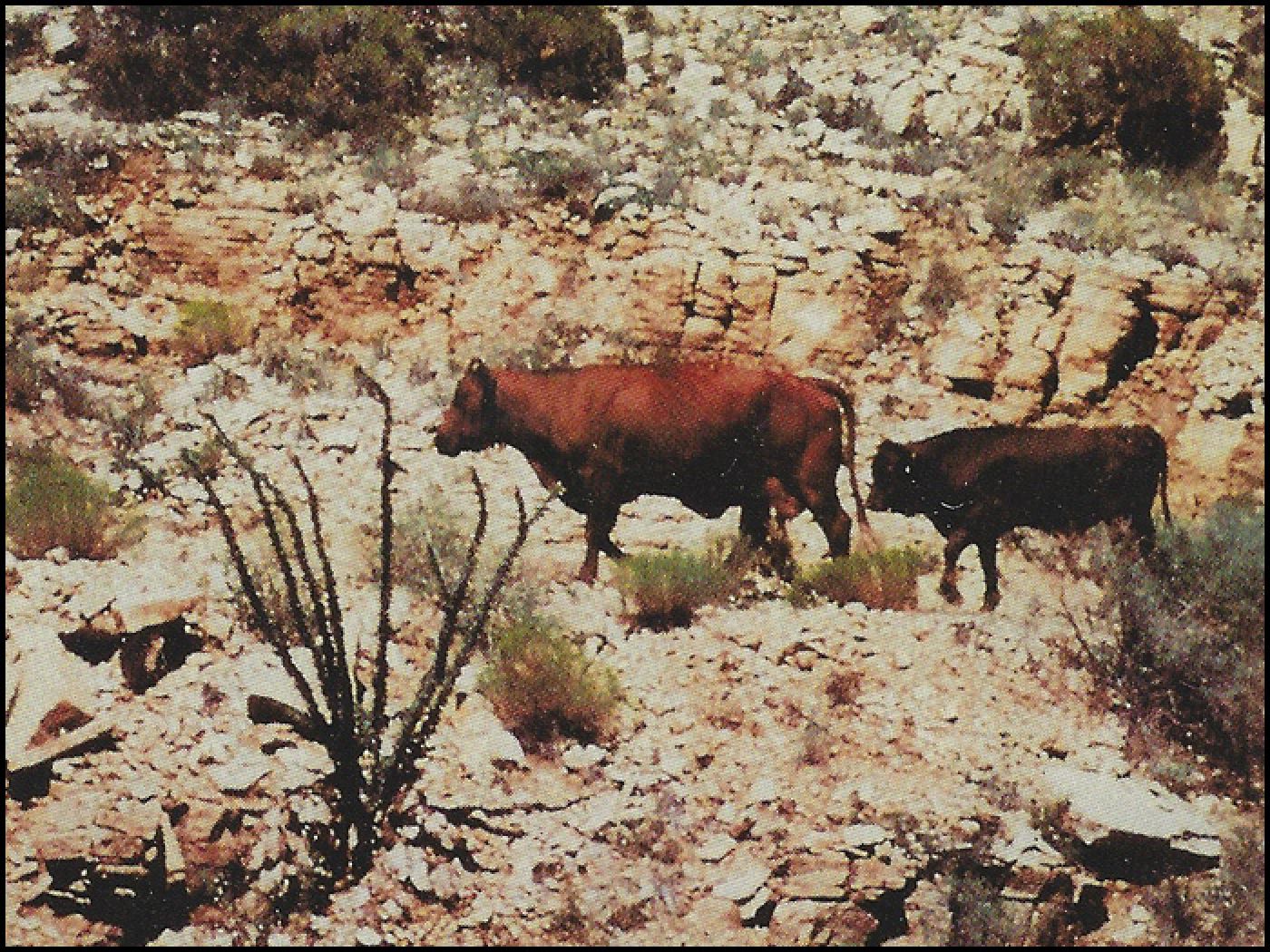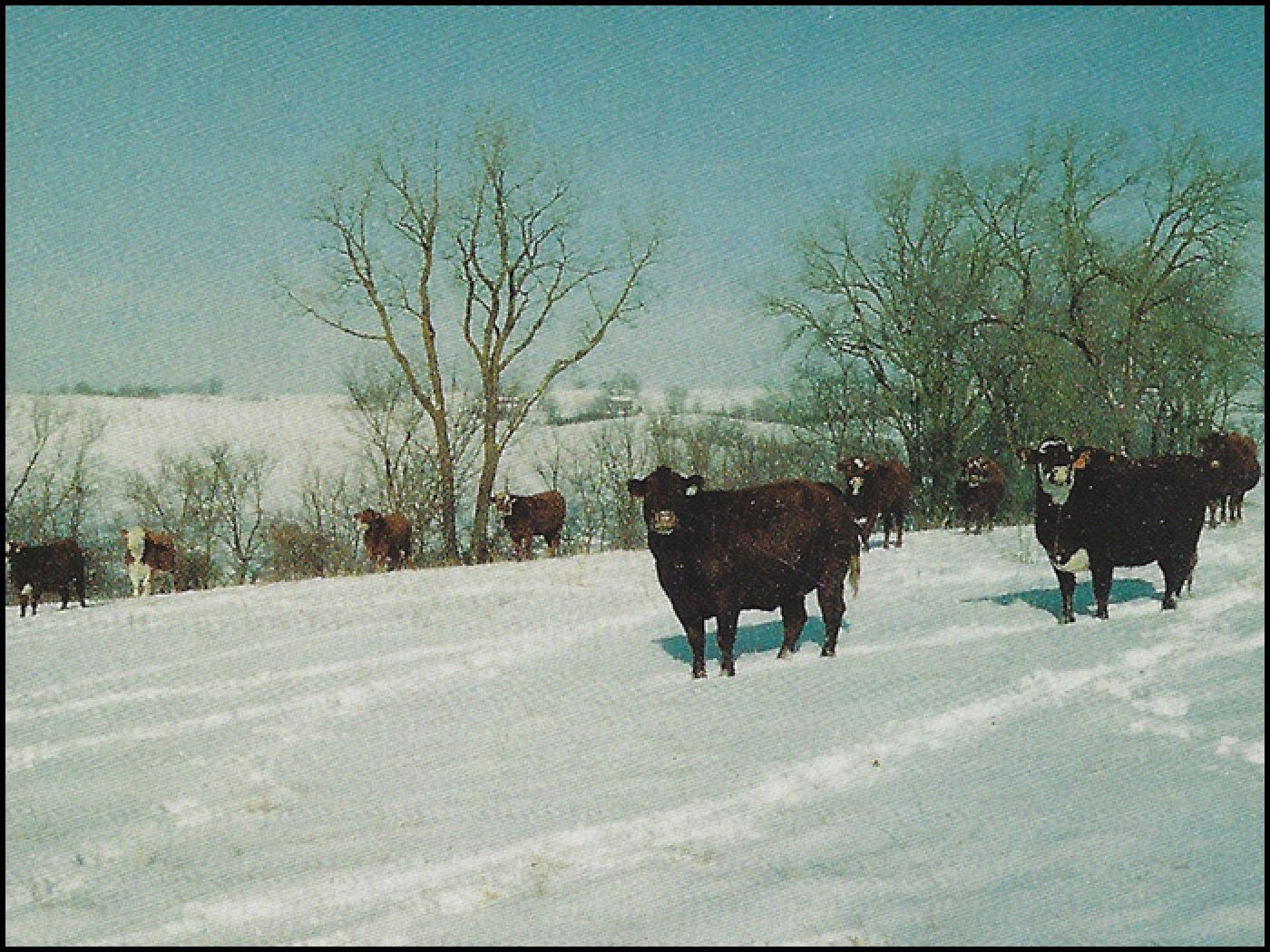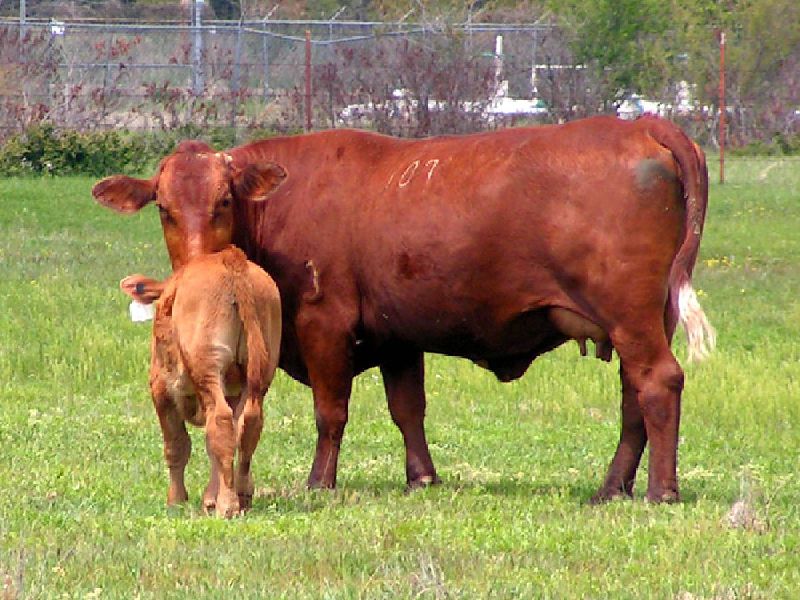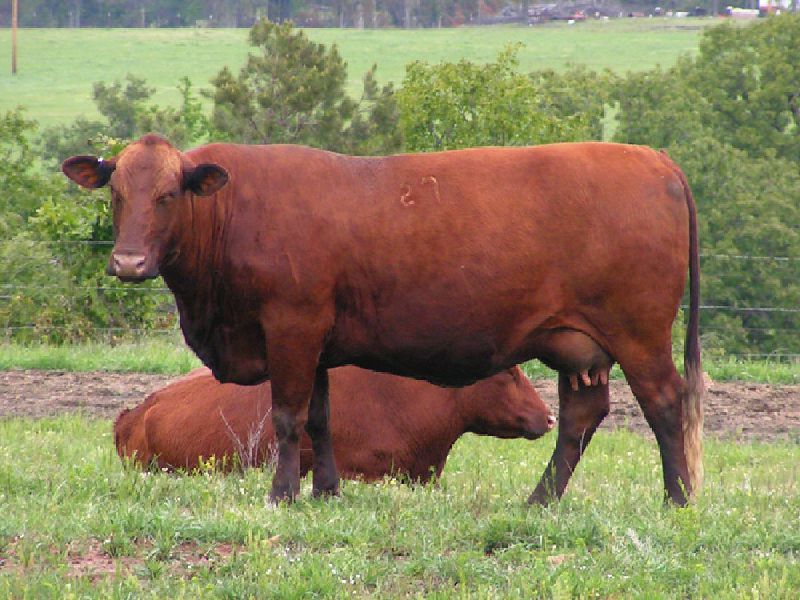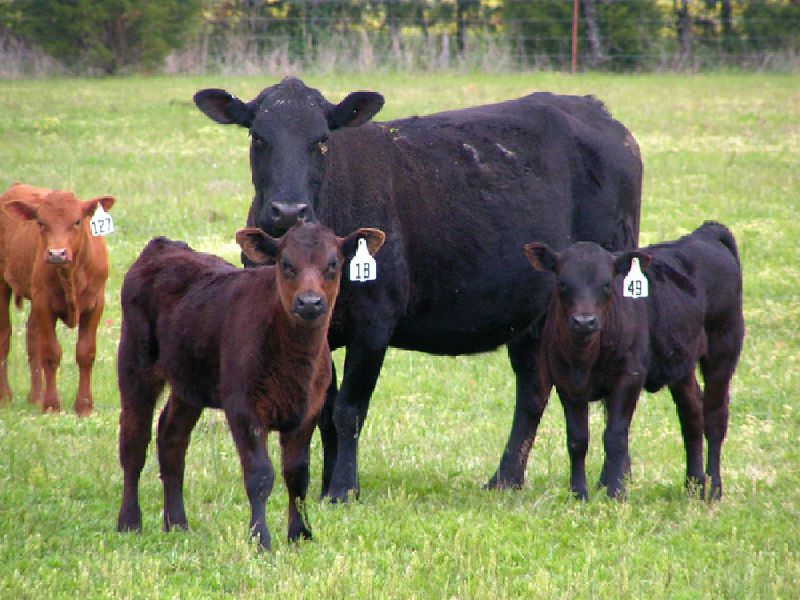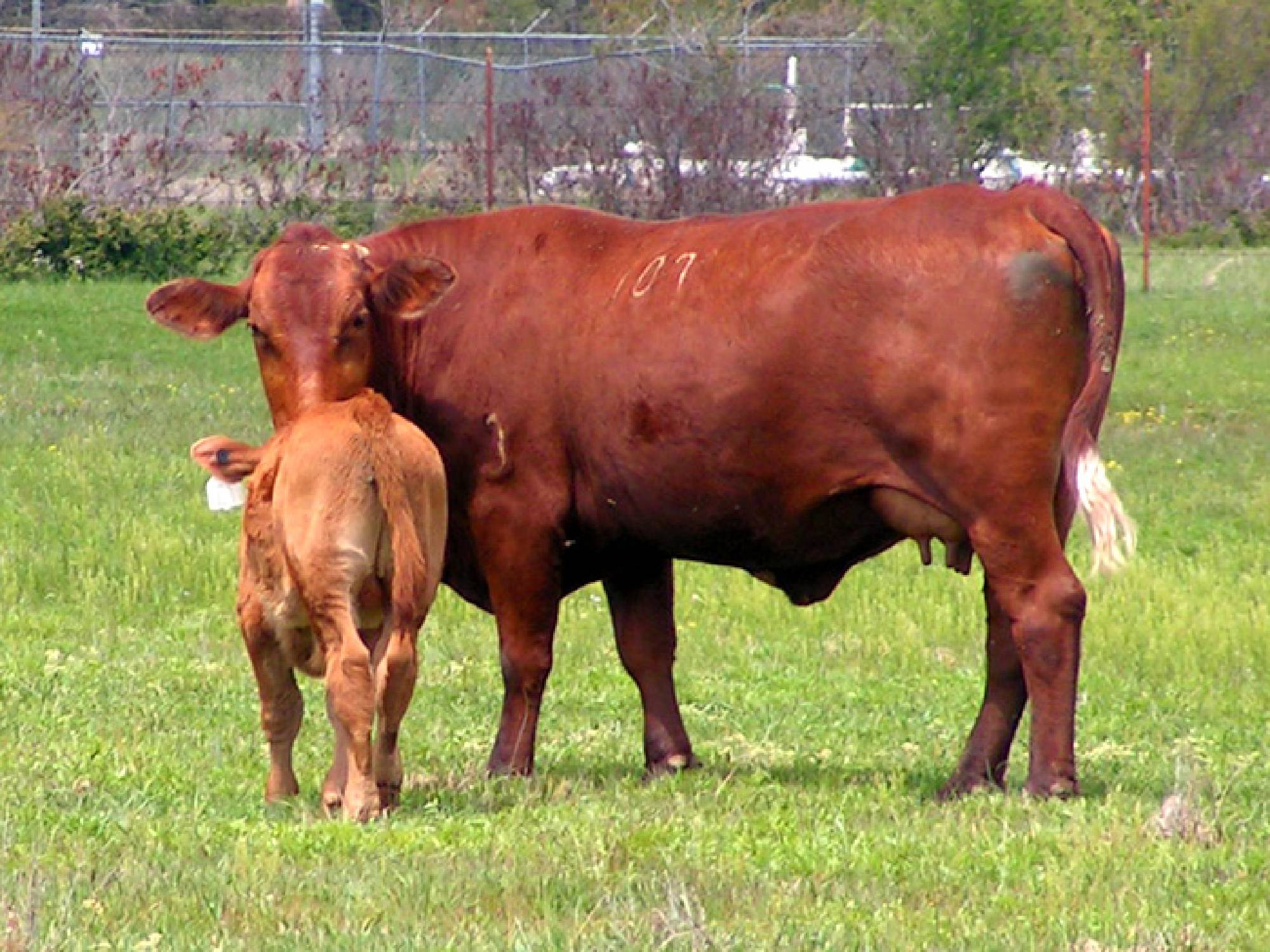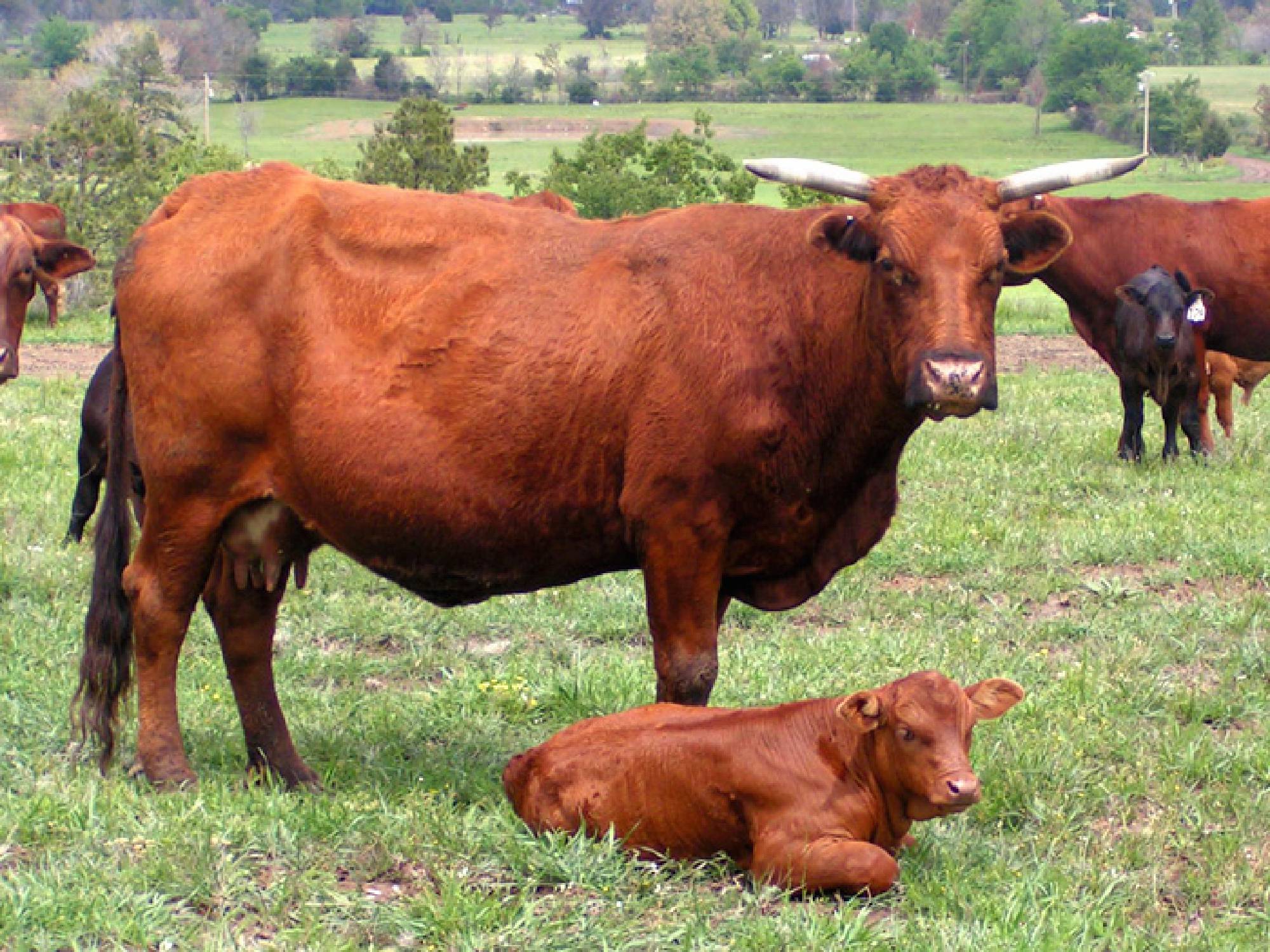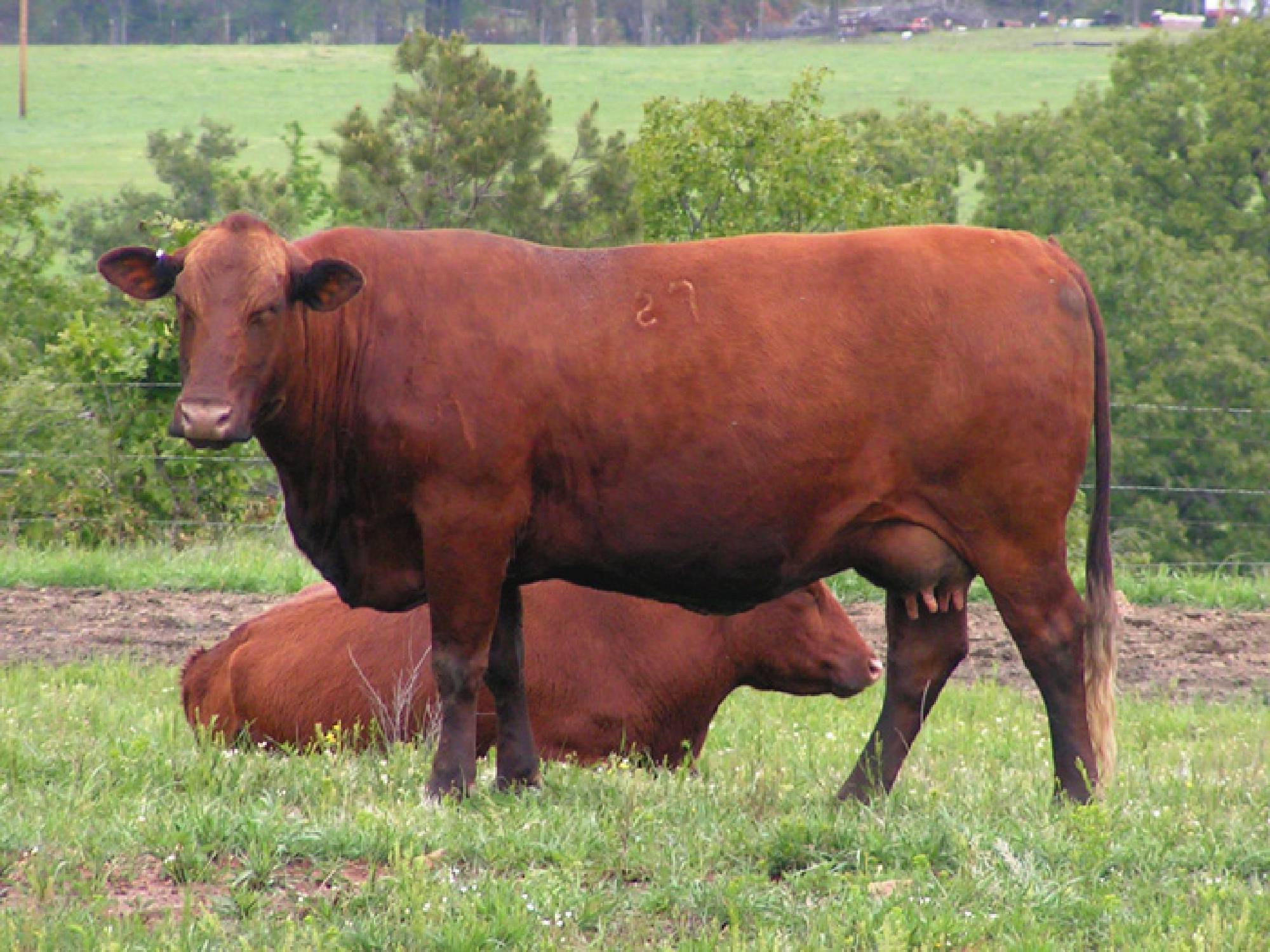Comments from across the country…
Arizona: “I’ve never seen any cattle with Brahman in them that mature as early or are as naturally fertile as these red cows.”
Texas: “The Barzonas have excellent heat tolerance, no foot rot, and flourish on grass-pasture type operations.”
California: “Our Barzona and Barzona crosses really utilize our range. They get to places that were not grazed before we got them. During recent severe drought, they stayed in good shape while our native cattle got poor. Our Barzona crosses are big and growthy without showing the excessive sheath and loose skin that our buyers don’t like.”
Georgia: “Our Barzonas made it through the coldest, toughest winter we’ve had in many years in much better shape than our good native cattle. During our hottest weather our Barzonas are out grazing when our native cattle are lying in the shade.”
Minnesota: “Through the worst blizzard of the century (1975), the coldest Minnesota winter in 100 years (1976-77) and 2 years of severe drought, our Barzonas have performed very well. They make outstanding mother cows with minimal calving problems, no pinkeye or foot rot, are very resistant to insects and parasites, and do it all on sub-marginal pastures.”
Central Arizona Feedlot Operator: “The cattle gain well and convert their feed better than most breeds. Barzonas can be finished for slaughter at popular weights without forfeiting carcass grade. They are very efficient in the feedlot and several meat packers have told me they do everything expected of them and then some.”
New Mexico: “These bulls really cover the country and get our cows bred better than any bulls we’ve ever had. I’ve never seen a sore-footed Barzona.”
Southern Utah: “Our Barzonas utilize our range better than any cattle we’ve ever had. They leave the bottoms, get up higher and get into rougher places. In hard times when other cows almost dry up, these red cows somehow keep milking enough to keep their calves growing and come back to milk production when conditions improve. I like their temperament – we can handle more Barzona cows with less help.”
